
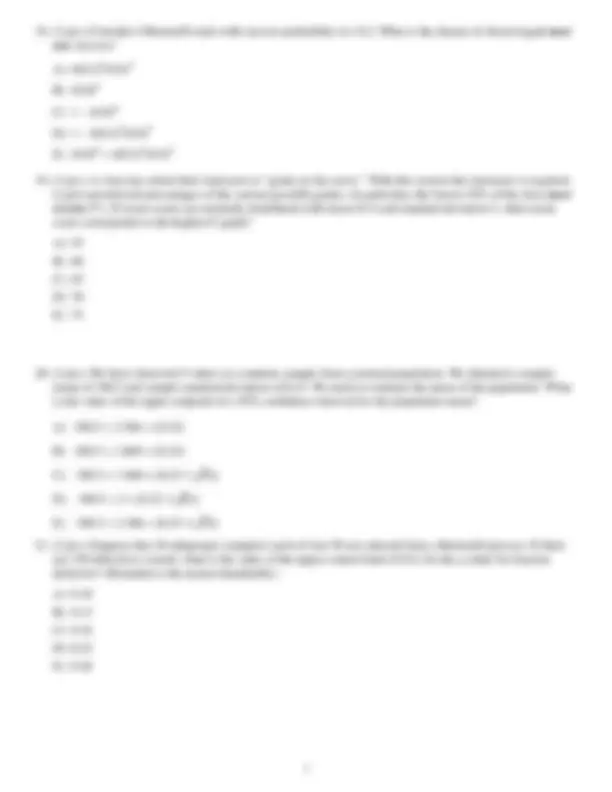
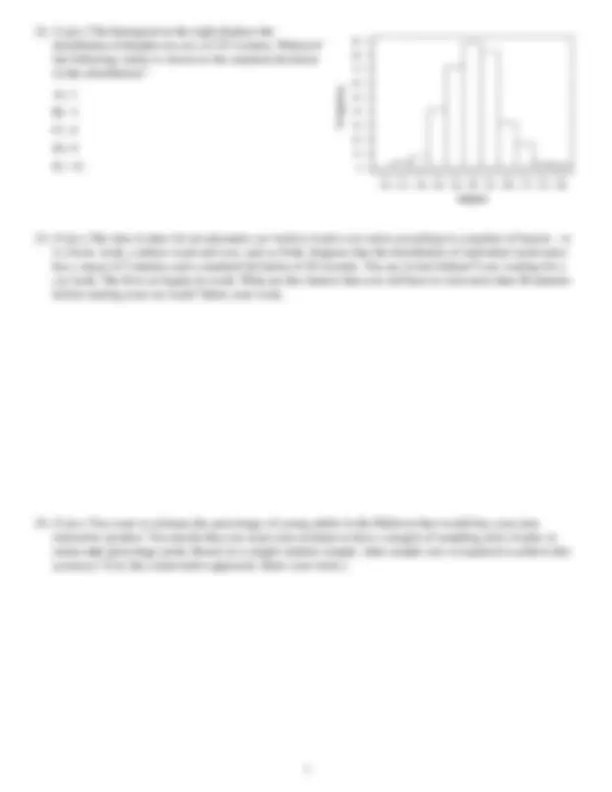
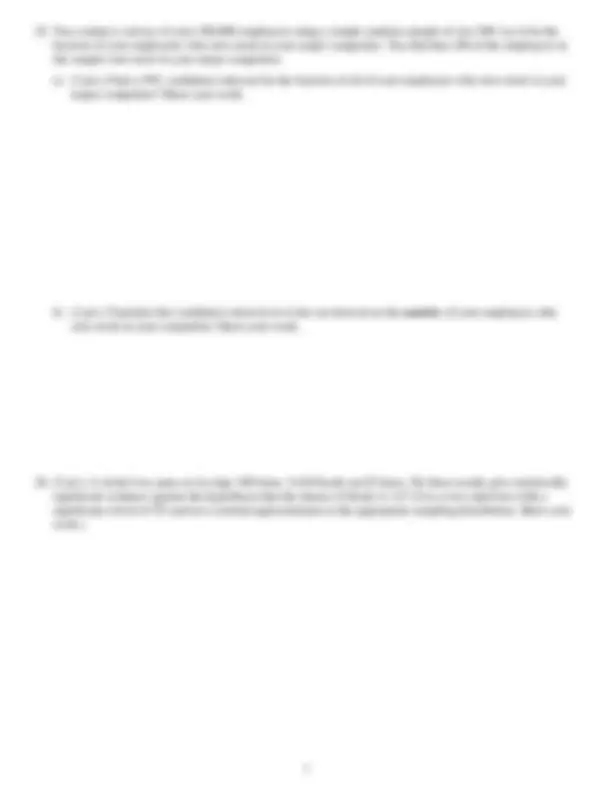
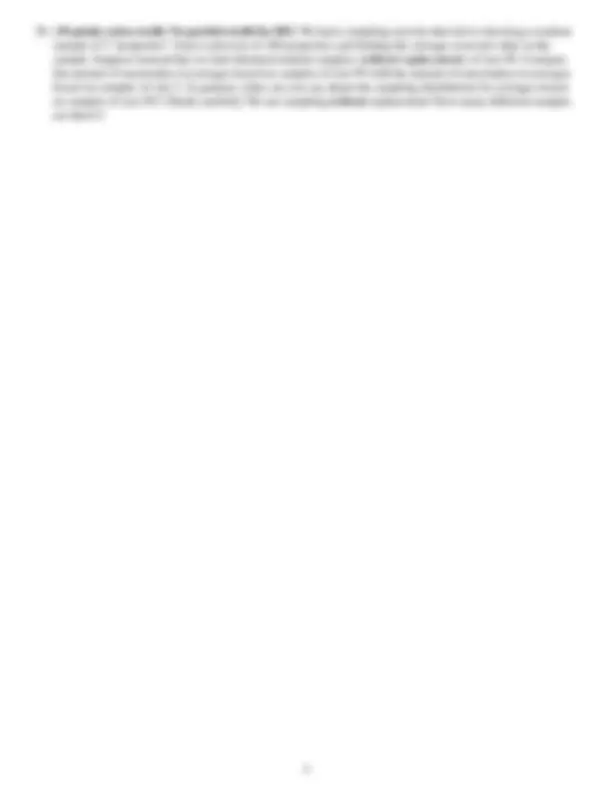
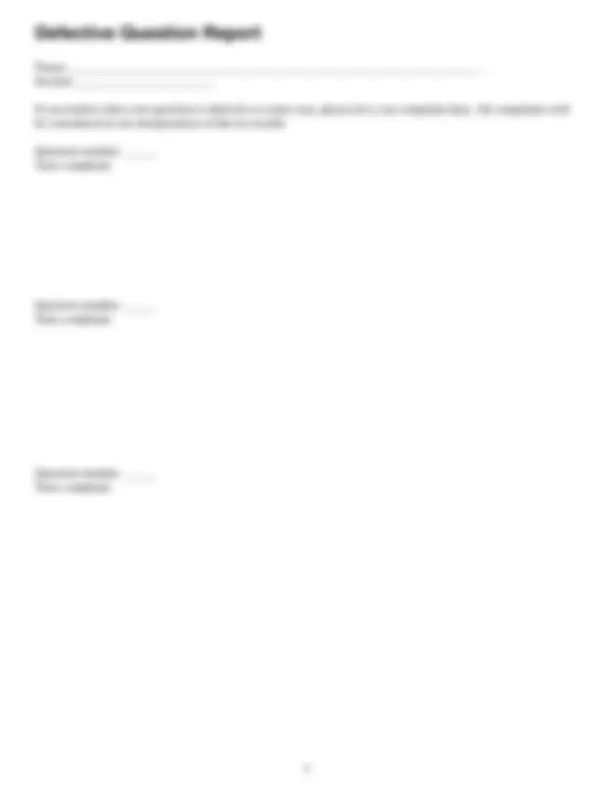


Study with the several resources on Docsity

Earn points by helping other students or get them with a premium plan


Prepare for your exams
Study with the several resources on Docsity

Earn points to download
Earn points by helping other students or get them with a premium plan
Community
Ask the community for help and clear up your study doubts
Discover the best universities in your country according to Docsity users
Free resources
Download our free guides on studying techniques, anxiety management strategies, and thesis advice from Docsity tutors
This is the Past Exam of Business Statistics which includes Residual, Diameter, Fitted Regression, Predicts, Volume, Diameter and Height, Largest Residual, Residual Standard Deviation, Model Fit etc. Key important points are: Individually Small, Numerical Characteristic, Statistic, Special Causes, Unobserved Influences, Process Results, Smallest Variability, Constant Cause System, Wide Band, Narrow
Typology: Exams
1 / 9

This page cannot be seen from the preview
Don't miss anything!






Please circle one. Section: 10:30 or 11:
Please enter all of your answers on these exam pages. Circle the correct answers for the true-false and multiple choice questions. There are 29 questions plus one bonus question. The Defective Question Report is supplied separately.
A) True B) False
A) True B) False
A) True B) False
A) True B) False
A) True B) False
the squared vertical deviations from the response values to the fitted regression equation. A) True B) False
A) True B) False
the same as the units for the response variable. A) True B) False
A) True B) False
A) True B) False
I. the correlation coefficient II. the standard deviation III. the mean A) I only B) II only C) III only D) I, II, and III E) None of A, B, C, or D is the correct answer.
A) 1. B) 1. C) 1. D) 2. E) 2.
y ˆ^ = b 0 + b 1 x + b 2 z
140 144 148 152 156 160 164 168 172 176 180
0
10
20
30
40
50
60
70
80
90
Heights
Frequency
b) (2 pts.) Translate this confidence interval on π into an interval on the number of your employees who own stock in your competitor. Show your work.
b) (5 pts.) In our red bead activity the 52 hole paddle was used 20 times and a total of 86 red beads were “manufactured.” Give a 95% confidence interval for π, the chance of producing a red bead on a single trial, that is, in a single hole. Show your work.
-5 -4 -3 -2 -1 0 1 2 3 4 5
dashed curve
dotted curve